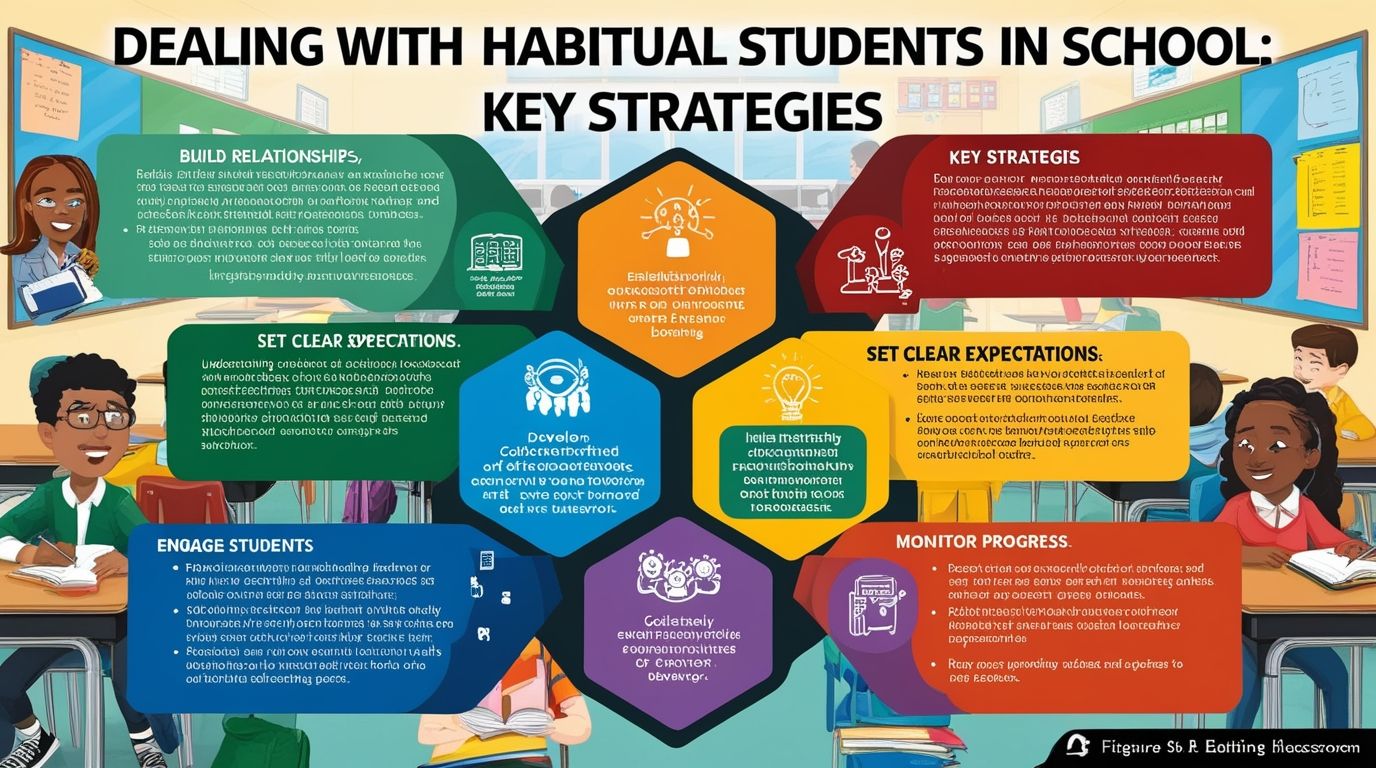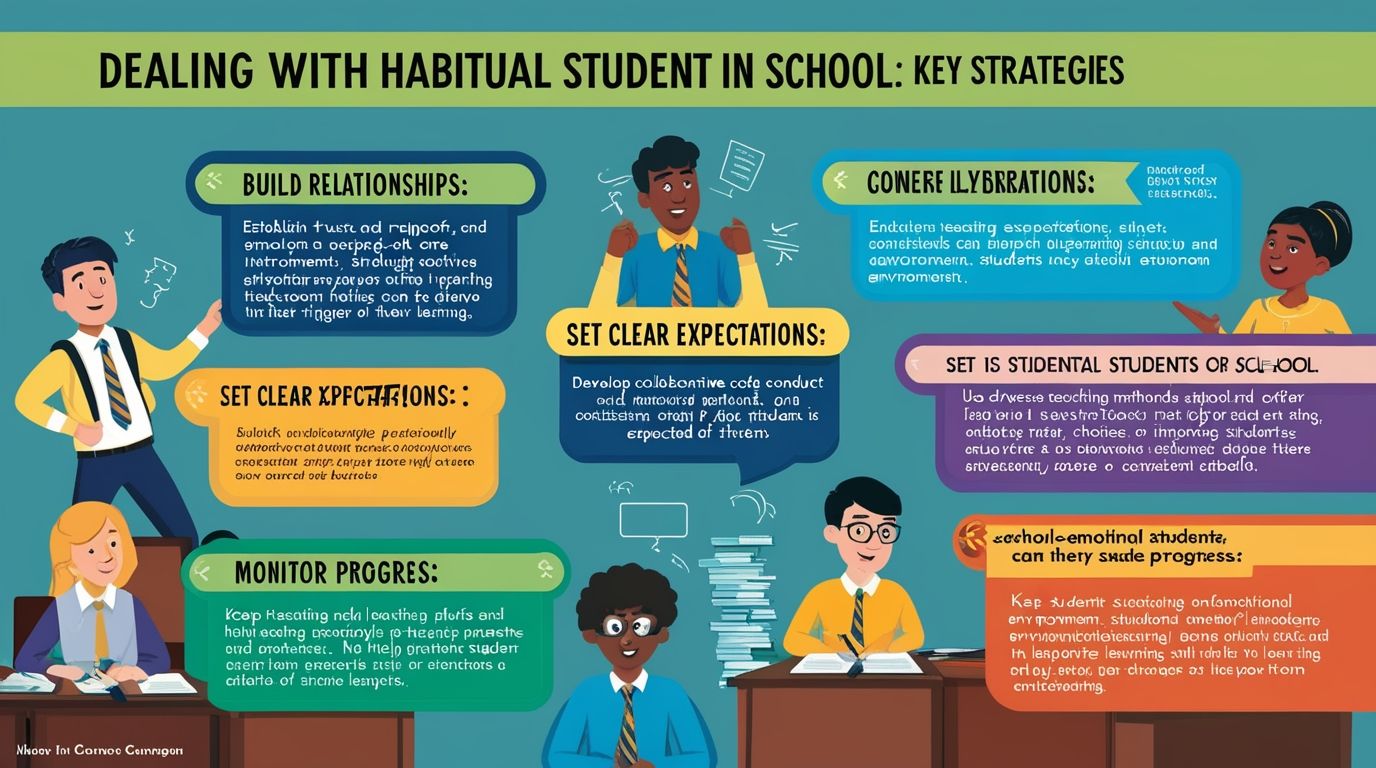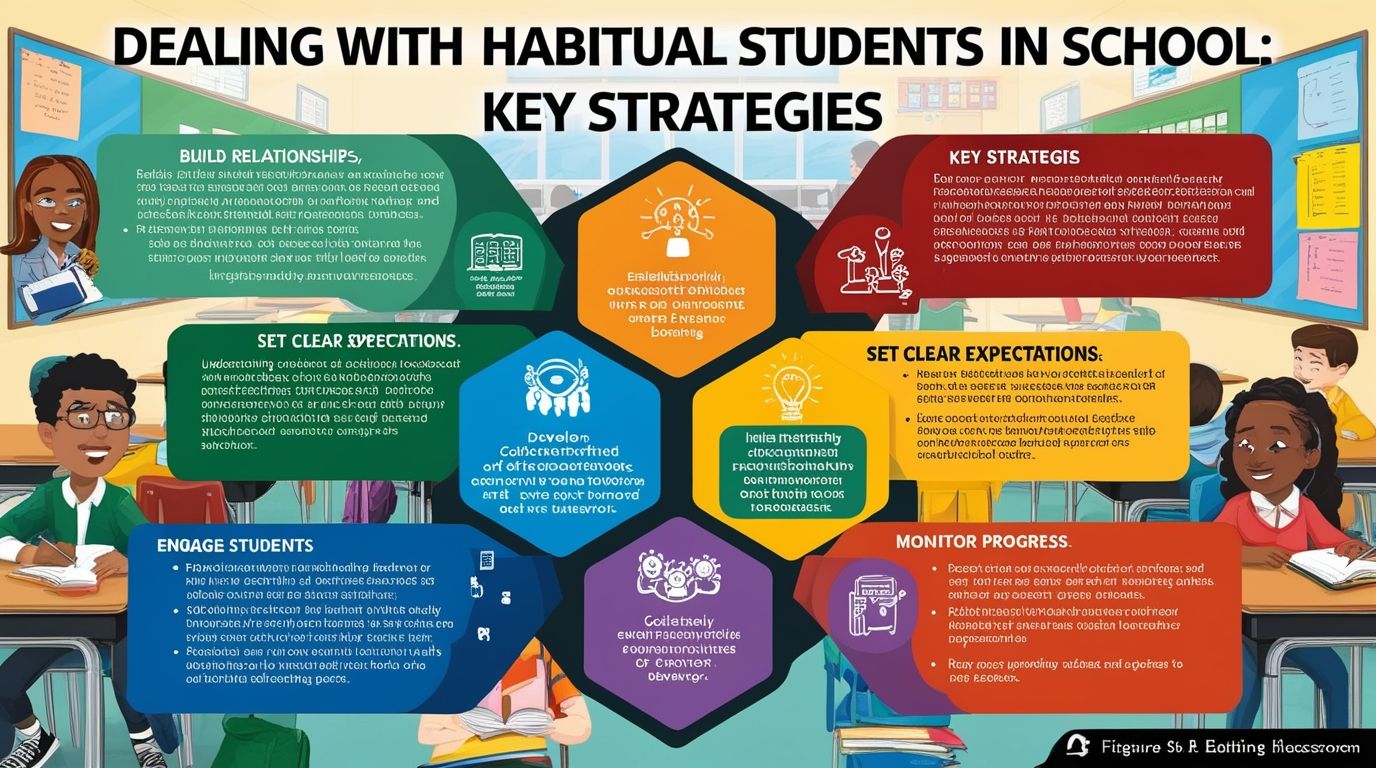Dealing with Habitual Students in School, In any educational setting, teachers encounter a variety of student behaviors, some of which can be particularly challenging. Habitual students—those who consistently disrupt the learning environment—pose a unique challenge. These students may exhibit patterns of disrespect, disengagement, or negative behavior that can affect not only their own learning but also that of their peers. This article explores effective strategies for educators to address habitual behavior in students, fostering a more positive and productive classroom environment.
Understanding Habitual Behavior
Before implementing strategies, it’s crucial to understand the reasons behind habitual behavior. These behaviors may stem from various factors:
- Emotional Needs: Students may act out due to unmet emotional needs, such as a desire for attention or connection.
- Learning Difficulties: Some habitual behaviors arise from frustration linked to academic struggles, where students may disrupt to avoid facing challenges.
- Environment: Factors outside of school, including family dynamics or peer influences, can contribute to a student’s habitual behavior.
- Cognitive Factors: Some students may lack the necessary social skills or impulse control, leading to disruptive actions.
Recognizing these underlying factors is the first step toward developing effective interventions.
Building Relationships
1. Establish Trust and Rapport
Building strong relationships with students is essential. Trust fosters a safe environment where students feel valued. Teachers can:
- Engage One-on-One: Spend time getting to know habitual students individually. Ask about their interests, challenges, and aspirations.
- Active Listening: Show genuine interest in their thoughts and feelings. This helps students feel heard and respected.
2. Consistent Communication
Regular communication with students can preemptively address issues:
- Daily Check-Ins: Begin class with a brief check-in to gauge students’ feelings and attitudes.
- Positive Reinforcement: Acknowledge good behavior frequently. Celebrating small successes can motivate habitual students to improve.
Classroom Management Strategies
3. Clear Expectations and Rules
Setting clear expectations for behavior is vital in any classroom:
- Develop a Code of Conduct: Collaborate with students to create a set of rules that everyone agrees upon.
- Consistent Consequences: Ensure that consequences for breaking rules are applied fairly and consistently. This reinforces accountability.
4. Create an Engaging Learning Environment
Habitual behaviors often arise from boredom or disengagement:
- Interactive Learning: Use varied teaching methods—group work, hands-on activities, and technology—to keep students engaged.
- Choice in Assignments: Allow students some autonomy in their learning. Providing options can increase motivation and reduce disruptive behavior.
5. Implement Routine and Structure
A structured classroom environment can minimize chaos:
- Consistent Daily Schedule: Following a predictable routine helps students feel secure and know what to expect.
- Transitional Cues: Use signals to indicate transitions between activities. This can help students prepare mentally for changes, reducing disruptions.

Intervention Strategies
6. Identify Triggers
Understanding what triggers habitual behavior is essential:
- Behavioral Logs: Keep records of when and where disruptive behavior occurs to identify patterns and triggers.
- Student Surveys: Ask students about their experiences and feelings in the classroom. Their insights can reveal underlying issues.
7. Develop Individualized Plans
For students who consistently disrupt, personalized intervention plans can be effective:
- Behavior Contracts: Collaborate with the student to create a behavior contract outlining expectations and rewards for meeting them.
- Counseling Support: Involve school counselors for students needing additional emotional or psychological support.
8. Engage Parents and Guardians
Involving parents can provide a broader support system:
- Regular Updates: Keep parents informed about their child’s behavior and progress.
- Collaborative Meetings: Host meetings to discuss concerns and develop strategies collaboratively.

Fostering a Positive Classroom Culture
9. Promote Social-Emotional Learning (SEL)
Incorporating SEL into the curriculum can equip students with essential skills:
- Emotional Regulation: Teach students strategies for managing their emotions, such as mindfulness exercises or breathing techniques.
- Conflict Resolution: Provide tools for resolving conflicts peacefully, fostering a cooperative classroom atmosphere.
10. Model Appropriate Behavior
Teachers play a critical role in shaping student behavior:
- Lead by Example: Demonstrate respectful communication, active listening, and conflict resolution in interactions with students and colleagues.
- Reflective Practices: Encourage students to reflect on their behavior. This can help them understand the impact of their actions on others.
Encouraging Positive Peer Influence
11. Create Peer Support Systems
Students often respond well to their peers:
- Buddy Systems: Pair habitual students with positive role models in the classroom. This can encourage better behavior and engagement.
- Peer Mentorship Programs: Implement programs where older or more responsible students mentor younger ones, fostering a sense of community and accountability.
Monitoring Progress and Adjusting Strategies
12. Regularly Assess Behavioral Changes
Continuously monitoring the effectiveness of interventions is crucial:
- Frequent Check-Ins: Meet regularly with students to discuss their progress and feelings regarding their behavior.
- Adjust Strategies: Be willing to modify approaches based on what is working or not. Flexibility is key to successful intervention.
Conclusion
Dealing with habitual students requires a multifaceted approach that combines understanding, relationship-building, structured environments, and targeted interventions. By fostering a supportive atmosphere and actively engaging with students, educators can significantly reduce disruptive behaviors. The goal is not only to improve classroom management but also to help students develop the skills they need to succeed academically and socially. With patience, empathy, and the right strategies, teachers can turn habitual disruptions into opportunities for growth and learning, ultimately benefiting the entire classroom community.

7 thoughts on “Dealing with Habitual Students in School”
Comments are closed.